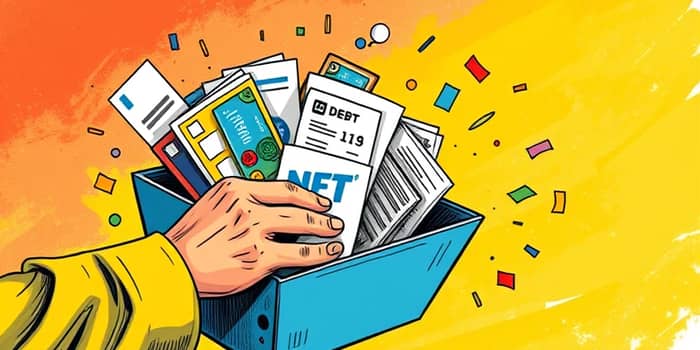
Juggling several small debts—whether credit cards, medical bills, or personal loans—can feel overwhelming. Each statement brings another due date, another interest rate, and another piece of mental clutter. What if you could replace all those scattered payments with a single, straightforward plan? By consolidating multiple small debts, you can trade chaos for clarity, reduce stress, and set yourself on a path toward true financial empowerment.
Managing individual debts often means memorizing multiple due dates and scrambling to cover minimum payments. This complexity increases the risk of missed payments, late fees, and credit score damage. With consolidation, all balances merge into one loan or card, simplifying your life.
When you combine debts, you benefit from:
Debt consolidation goes beyond combining balances. It can offer real savings and psychological relief:
With national credit card rates averaging around 20% in mid-2025, switching to a personal loan at 12.65% or a zero-percent promotional period can translate into thousands saved over the life of the loan.
Data from recent studies reveal the powerful impact of bundling small debts:
These trends underscore that for those in the “prime” credit tiers, improvements persist for at least 18 months. Borrowers in lower tiers must still be wary of falling back into old patterns.
There are two primary consolidation strategies: personal loans and balance transfer credit cards. Both aim to unify debts but differ in structure and timing.
Personal loans are unsecured and come with fixed rates and terms. After approval, you receive a lump sum to pay off existing balances. Once settled, you owe only the new loan, with predictable monthly payments until the balance reaches zero.
Balance transfer cards allow you to move multiple credit card balances to one card with a promotional 0% APR for a set period, often up to 21 months. The goal is to pay down the transferred balance aggressively before the standard rate kicks in.
Debt consolidation can be a transformative tool, but it’s not risk-free. To maximize benefits, be mindful of the following:
Ready to simplify your financial life? Follow these practical steps:
Consolidating multiple small debts is more than a financial tactic—it’s a transformative strategy. By simplifying your payments into one manageable plan, you protect your credit score, save on interest, and reduce stress. Whether through a personal loan or a balance transfer card, the power to streamline your debt profile lies within reach.
Embrace this opportunity, adopt disciplined spending, and watch as your financial horizon clears. With every payment, you’ll move closer to debt freedom and a more empowered future.
References













